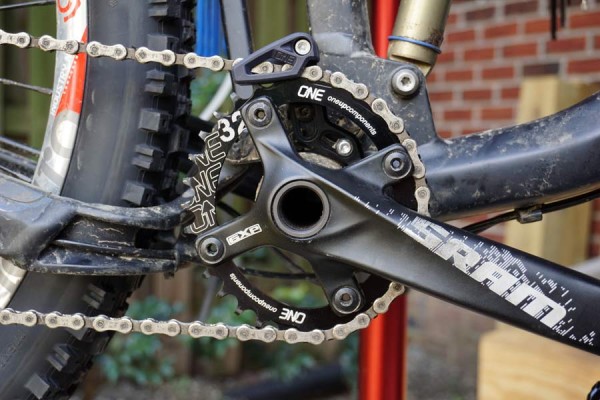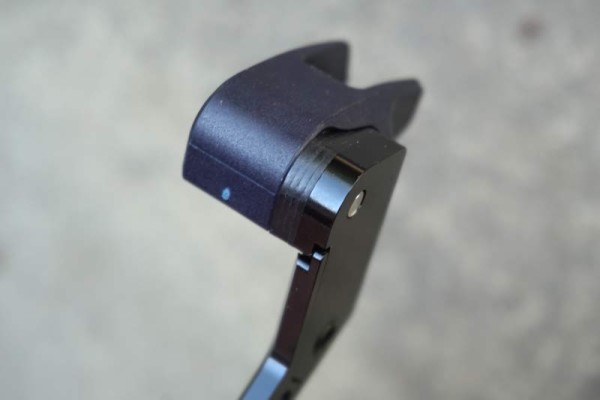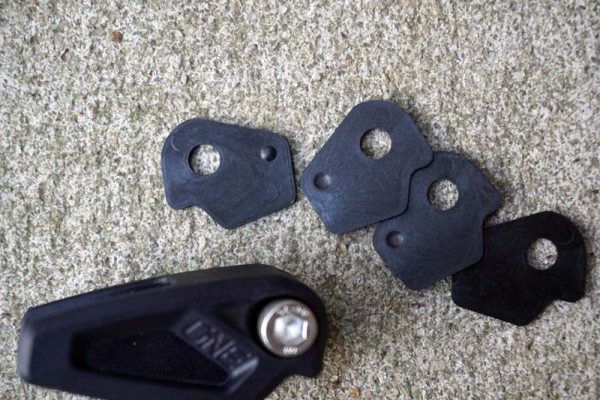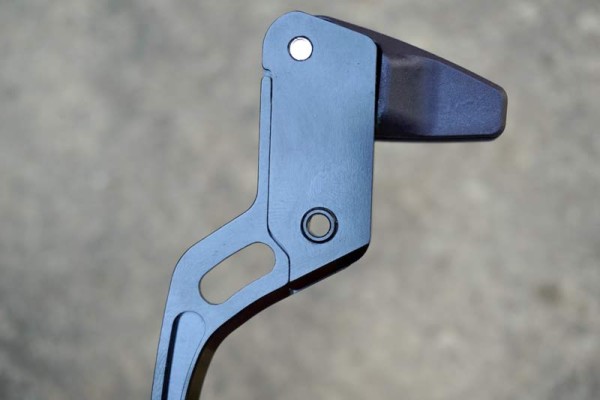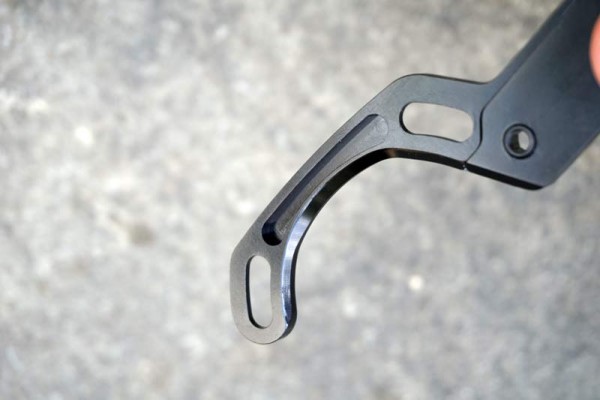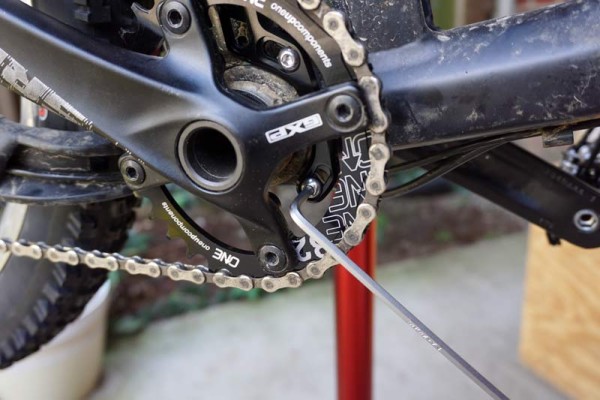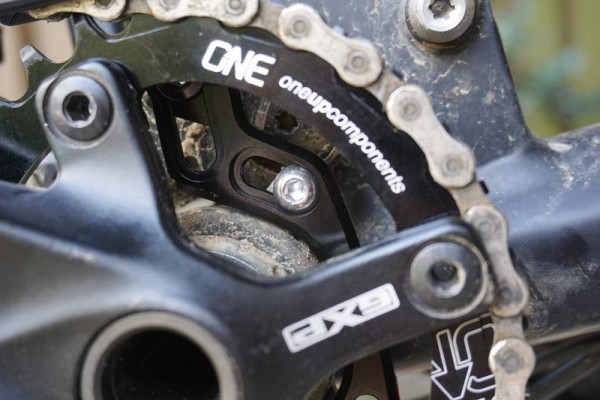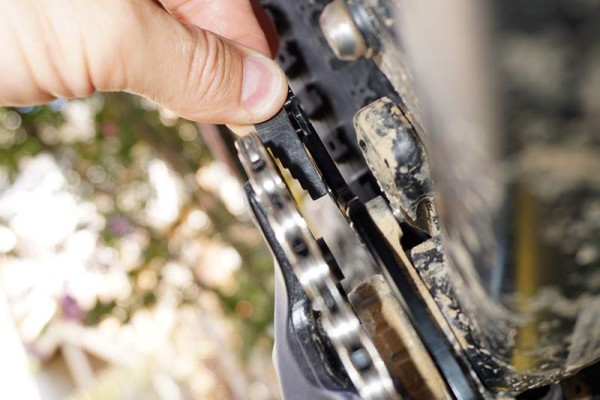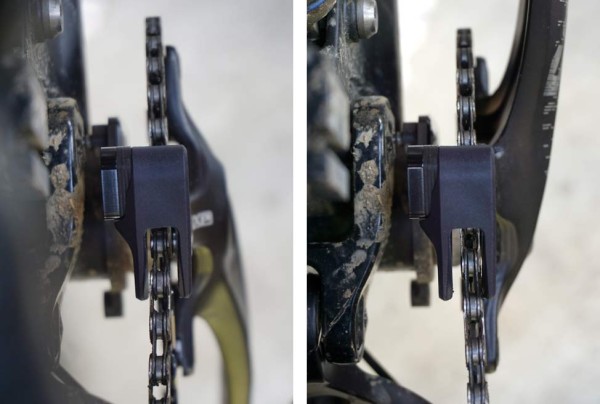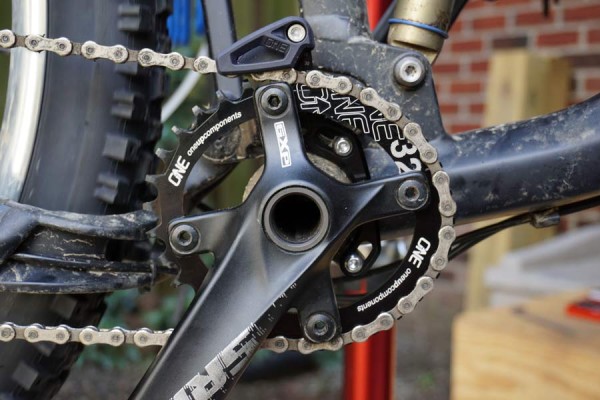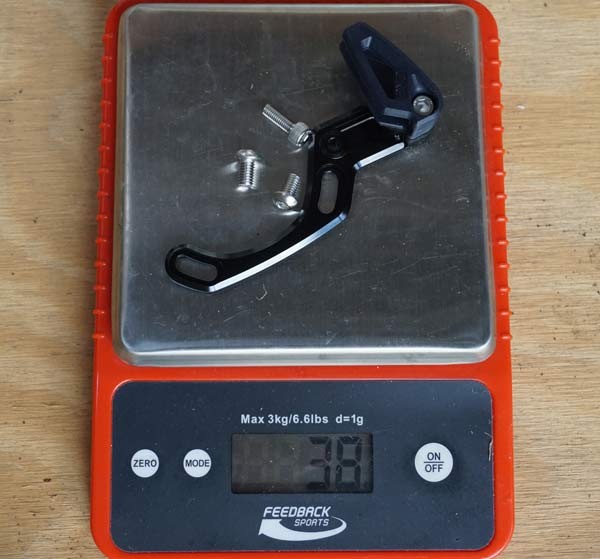With the new OneUp Components Chainguide, the brand branches just outside the moving parts of your drivetrain with a very light, very adjustable and very easy to install chain retention device.
Sure, the promise of narrow-wide chainrings (especially when paired with a clutched rear derailleur) is that you won’t drop your chain in the first place. But if your trail or riding style is hyper aggressive, a little extra insurance never hurts. Having ridden a couple different designs, the top-mounted bolt-on design OneUp’s come up with makes it easier than ever to add a chainguide when you need it, and remove it when you don’t.
The part mounts to the front two ISCG05 bolt holes, rotates and slides and can even adjust to match your chainline. All with just four tiny bolts and about 10 minutes of your time…
A composite guide bolts into the alloy structure, sandwiching up to five spacers to center it on your chainline.
The spacers are shaped to match the guide’s profile and keyed with small bumps to remain in line with each other. A similar bump is on the backside of the guide. Two different bolt lengths are included, letting you run a shorter bolt when fewer spacers are needed.
All adjustments are handled with a single allen wrench. The guide slides up and down to fit anything from a 28T to a 36T chainring, ovals included.
Fit and finish is tight, and once it’s all snugged into place everything is rock solid. Long term ride testing will prove whether it stays that way, but first impressions are good.
Slotted mounts for the ISCG05 tabs let the entire device rotate to lineup with the crank, which accommodates for different BB drops and suspension movement.
As shown in the top image and this one directly above, all bolts are accessible with the crankset still on the bike. Installation and adjustments can all be made without having to remove the cranks, chainring or anything else in most cases.
Once the body of it’s bolted onto the frame, you remove the guide and slide in the included gap checker to determine how many spacers are needed. The first step means none are needed, and each additional step adds one spacer. In this case I should use five, but my pre-production sample only came with four, so for now, four it is.
Add the spacers and bolt on the guide. To lift it for chainring swaps or other service, simply loosen the bolt slightly and it opens upward.
These show the chain on either end of the cassette and illustrate why that 5th spacer would line it up better. Even so, there’s a paper thin gap between the guide’s outer plate and the chain when it’s on the smallest cog.
The guide works with oval chainrings just as well as round. Above shows their 32-tooth oval chainring with the shortest section in the guide, and the pic at the start of this post shows it in the tallest.
Actual weight with four spacers and both guide bolts is 38g, but you only of the bolts (one is installed, the other long bolt is laying loose on the scale. The two short bolts attach the guide to the frame). Claimed weight is 35g, which should be just about right if that other bolt hadn’t been on the scale, but I had already installed it by the time I realized my goofed weigh-in.
Official specs are:
- 5mm chainline adjustment
- 26-38 tooth chainring compatibility (it’s etched with 28-36, but will accommodate +/- 2 teeth to accommodate oval rings or just standard smaller 26T and larger 38T rings, too).
- Patent pending adjustment system
- Single tool adjustment
- Boost compatible
- Doubles the life of narrow/wide chainrings
That last part is explained by Jon at OneUp thusly:
We consider the ‘life’ of a NW ring to be the point at which the guide-less retention is no longer acceptable – Obviously this a difficult to quantify. When the chain is super active at speed the contact between chain and ring effectively ‘thins’ the teeth and therefore lowers the rings retention ability. The guide extends NW ring life by limiting the chains side-to-side movement and therefore its ability to wear the face of the teeth.
Realistically the guide was tested with and will retain narrow-narrow rings so you only need to replace your chainring when the driving faces have worn out. This means you can potentially run your ring much longer.
We chose to go for a guide over a steel NW ring due to weight and because even with perfect teeth you can very occasionally cause a drop due to a big compression, worn clutch etc – There is a reason every 1X rider in the EWS runs at least a top guide (including Jared, Richie and the rest of the Yeti EWS team.
Available now, retail is $45.
